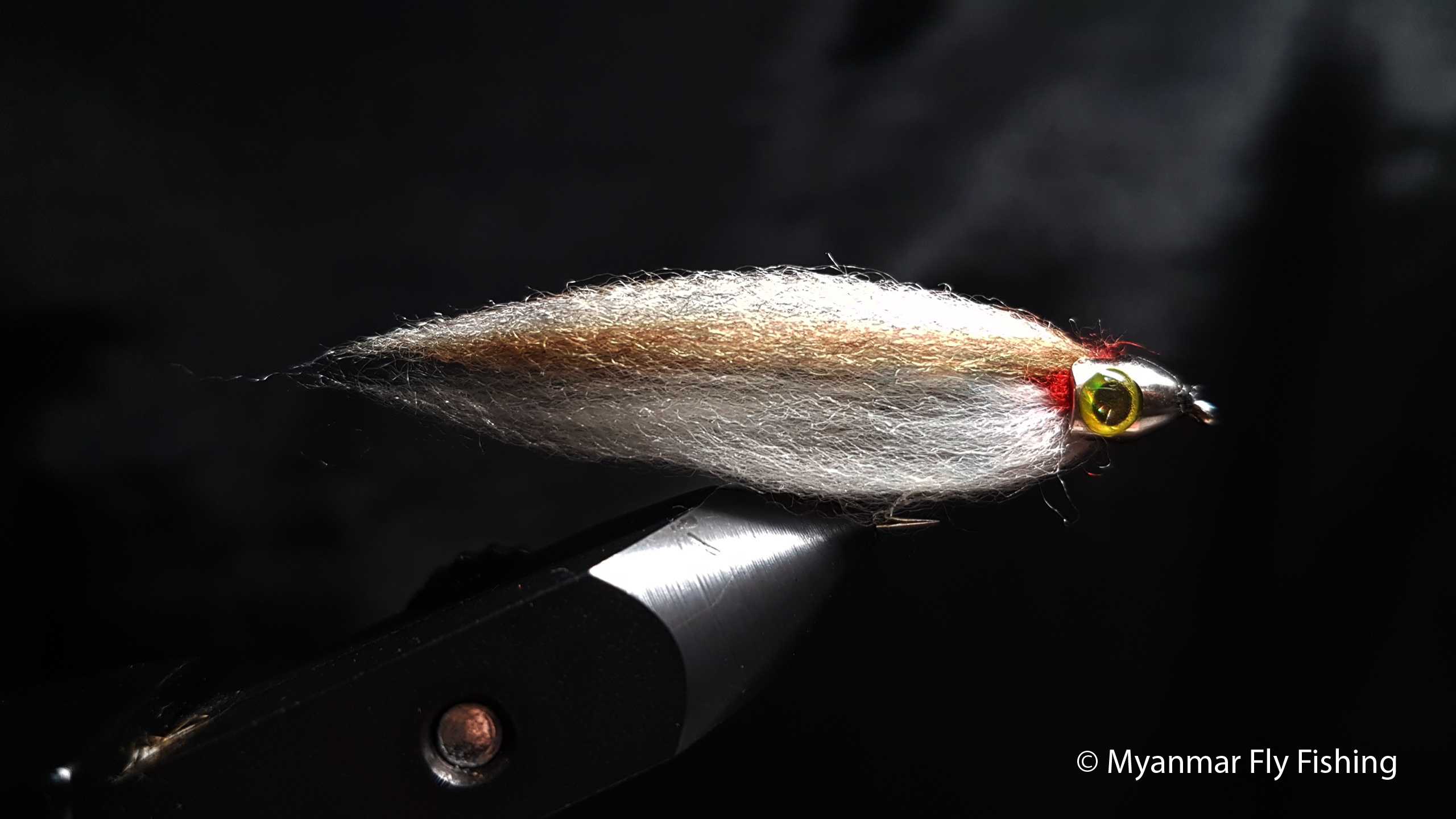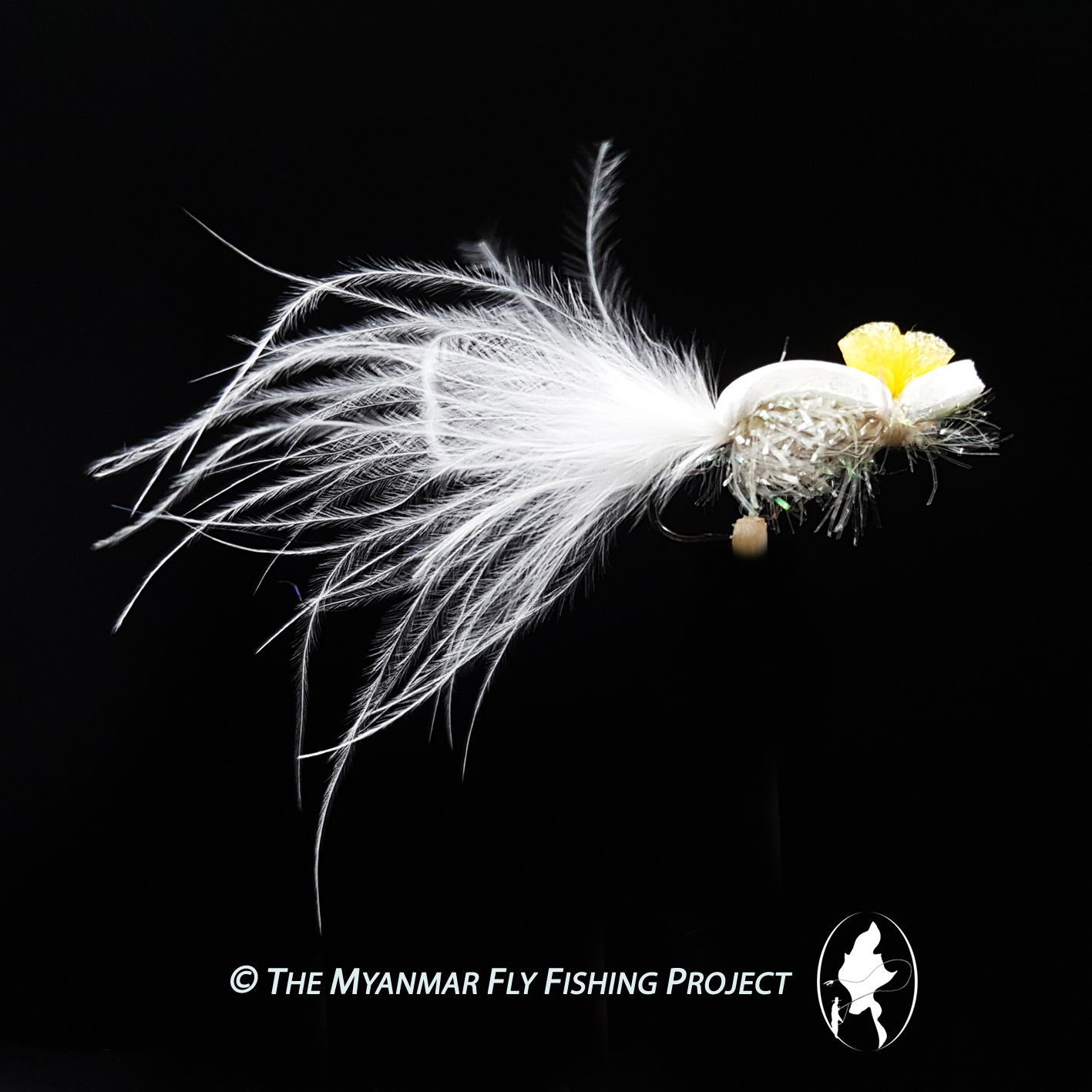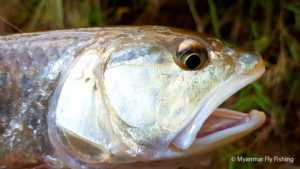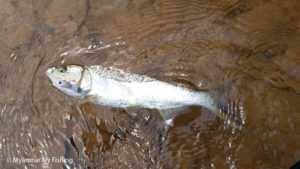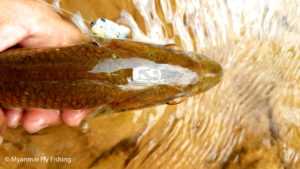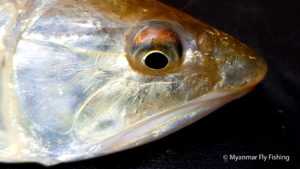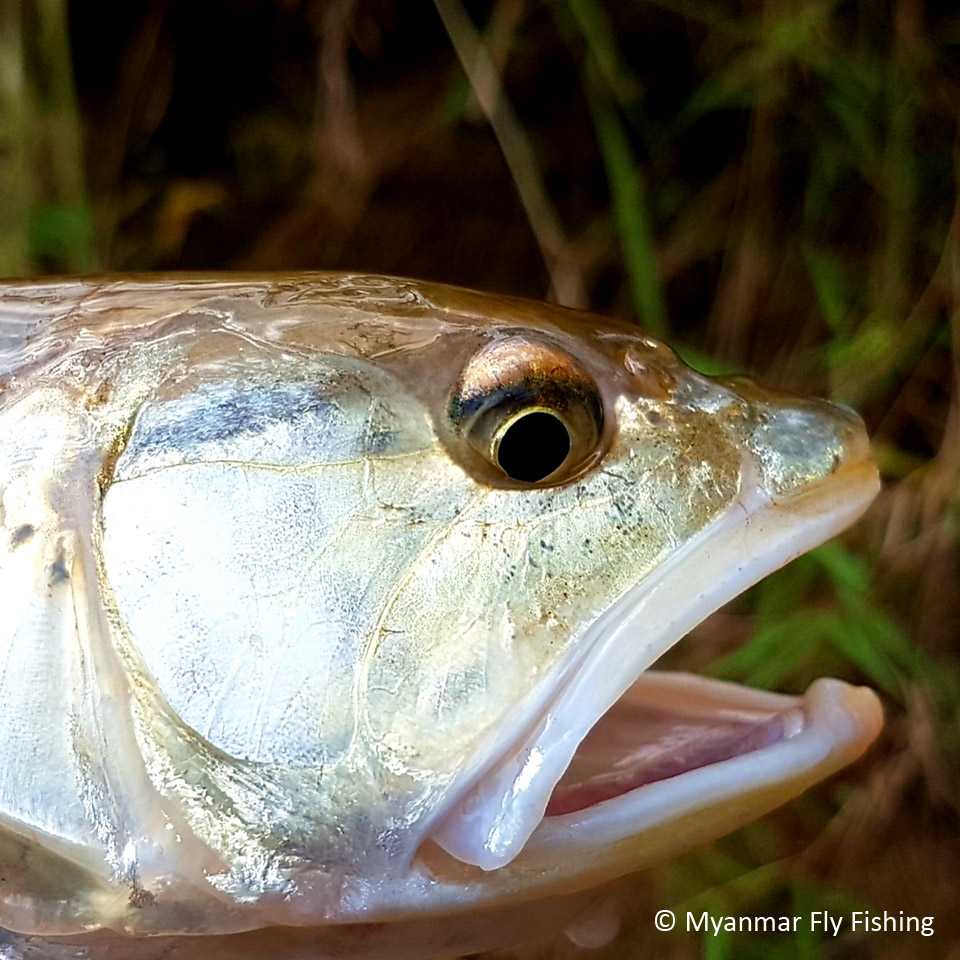
Family: Cyprinidae
Order: Cypriniformes
Myanmar Names: None
Occurence: Native
Description (Source: Wikipedia)
The Burmese trout is a species of ray-finned fish in the genus Raiamas.
It can be easily mistaken with its cousin the trout barb (Raiamas bola) from which it differs by the presence of a pair of short maxillary barbels. Raiamas bola on the other hand do not have barbels but presents a deep cleft in the mouth.
Their colour varies depending on the surrounding environment, but it is mostly silvery with very lightly coloured purple spots on the body. The top of the body is also slightly darker than the belly, from light brown to dirty green.
Burmese trouts are found in the Irrawaddy, Mekong, Chao Phraya, Salween River basins and also in the northern Malay Peninsula.
Biology / Diet / Behavior (Source: Fishbase)
Burmese trouts inhabit shady areas and muddy bottoms in deep hill streams. Adults are usually collected in clear water with moderate to swift currents while juveniles prefer quiet pools further downstream. They are found in medium to large-sized rivers, flooded fields and rapid-running mountain streams. In swift current areas, adults would tend to occupy a precise position, especially right beside white waters that form below cascades or accelerations. In slow moving waters, they tend to roam around a lot more but can be often found at the end of the pools, just where the current is about to accelerate.
As a predator, the burmese trouts feeds on small fish and insects, both aquatic and terrestrial. They are solitary in nature but tolerate rather well other individuals around them.
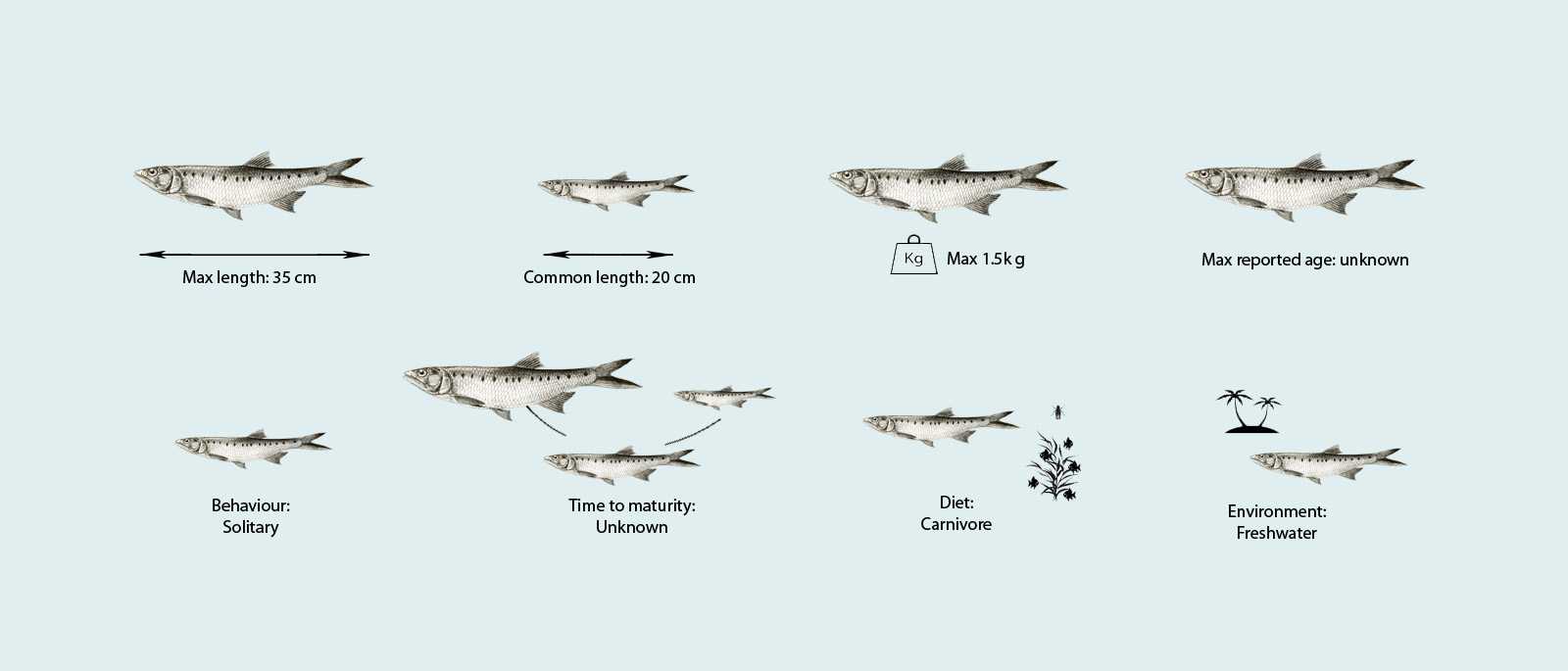
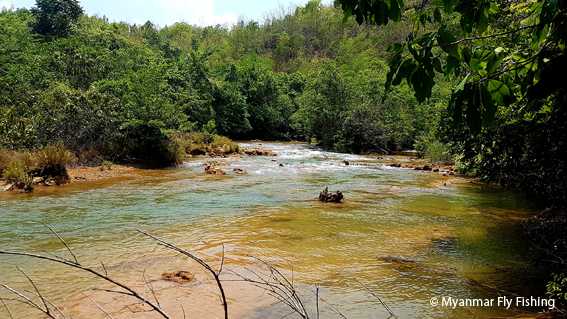
Fly Fishing For Burmese Trout In Myanmar: What We Understand & Know So Far...
Burmese Trouts can be found in swift rapids or in deep slower pools; in rapids, they would tend to occupy a precise position, especially right beside white waters that form below cascades or accelerations. In slow moving waters, they tend to roam around a lot more but can be often found at the end of the pools, just where the current is about to accelerate.
They are solitary in nature but tolerate rather well other individuals around them.
We have found that they particularly love gurgler patterns a lot more than streamers or other dry flies. However, they miss the fly quite often, despite their fairly wide mouth. It is also quite common to lose fish during the fight, an other sign indicating that the take may be imprecise. Or maybe it is the wide mouth that make setting the hook a challenge. This adds to the pleasure of fly fishing for burmese trout where takes can be plentiful, but actual catches remaining challenging at times due to the frequent misses and losses.
Although they do not grow big, they are lots of fun to target.

